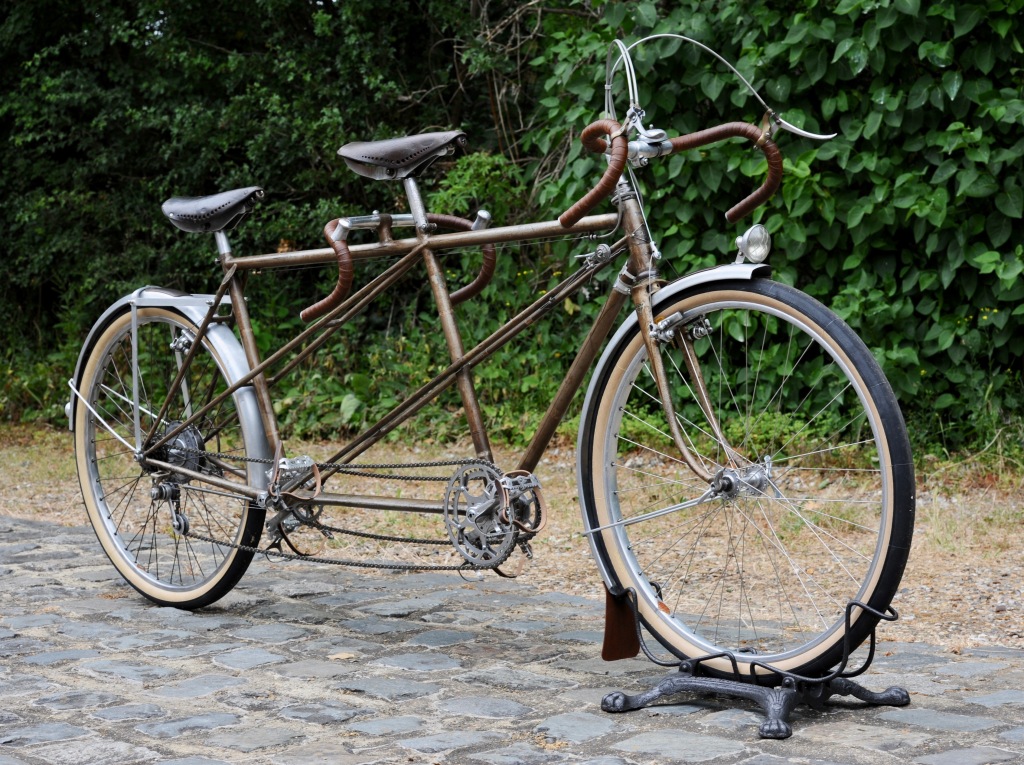
In the world of the French constructeurs, André Reiss is held in the highest esteem. The Lyon based maker of Reyhand bicycles was an innovator, and was instrumental in setting a new course for other makers to follow.
In 1934, the Groupe Montagnard Parisienne established the Concours de Machines, or technical trials. Dissatisfied with the heavy, run of the mill machines of the big makers, they encouraged the construction of a new breed of touring bicycle, light and nimble, utilising the newly emerging duralumin cycle components. The trials tested the competitors machines over a punishing hilly course, and points were deducted for any failures or breakages of components. Lightness earned higher points. This event established that it was possible to make a much lighter bicycle, whilst still retaining it’s strength and reliability.
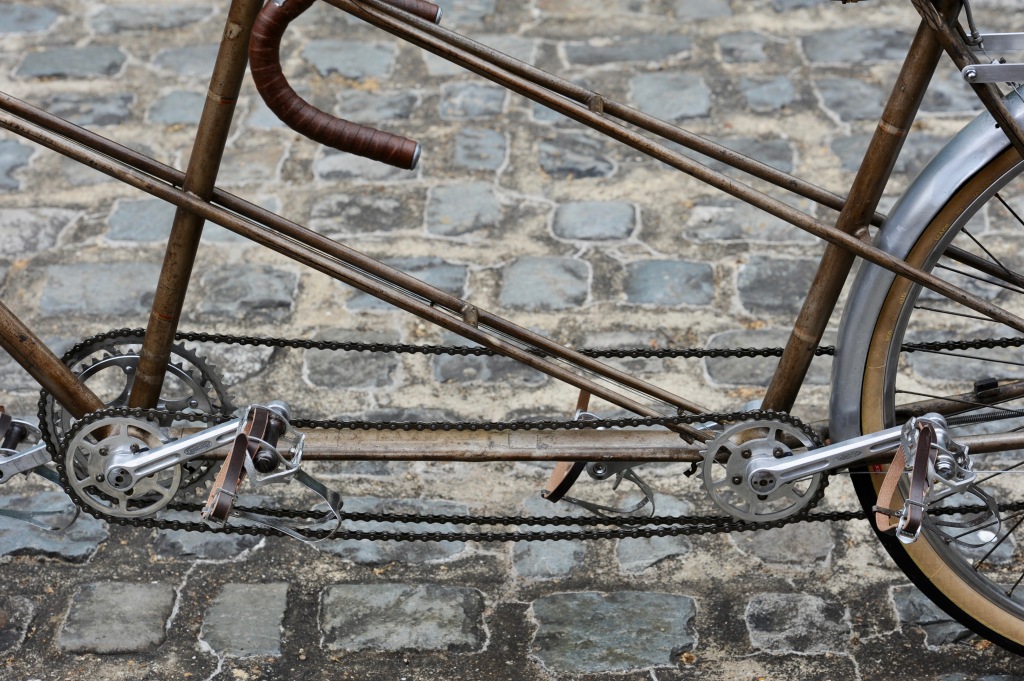
André Reiss started constructing bicycles in 1934, and won the Concours de Machines three years in a row from 1935 to 1937. Further successes came in the Critérium des Alpes, and Critérium Cyclotouristique de “L’Auto”. Of course that was a great advert for him and they became the most highly desirable touring machine of the period. Sadly, Reiss was killed in action in the War, in 1940. Few of his bicycles and tandems survive, and they are as highly sought after today as they were in period.
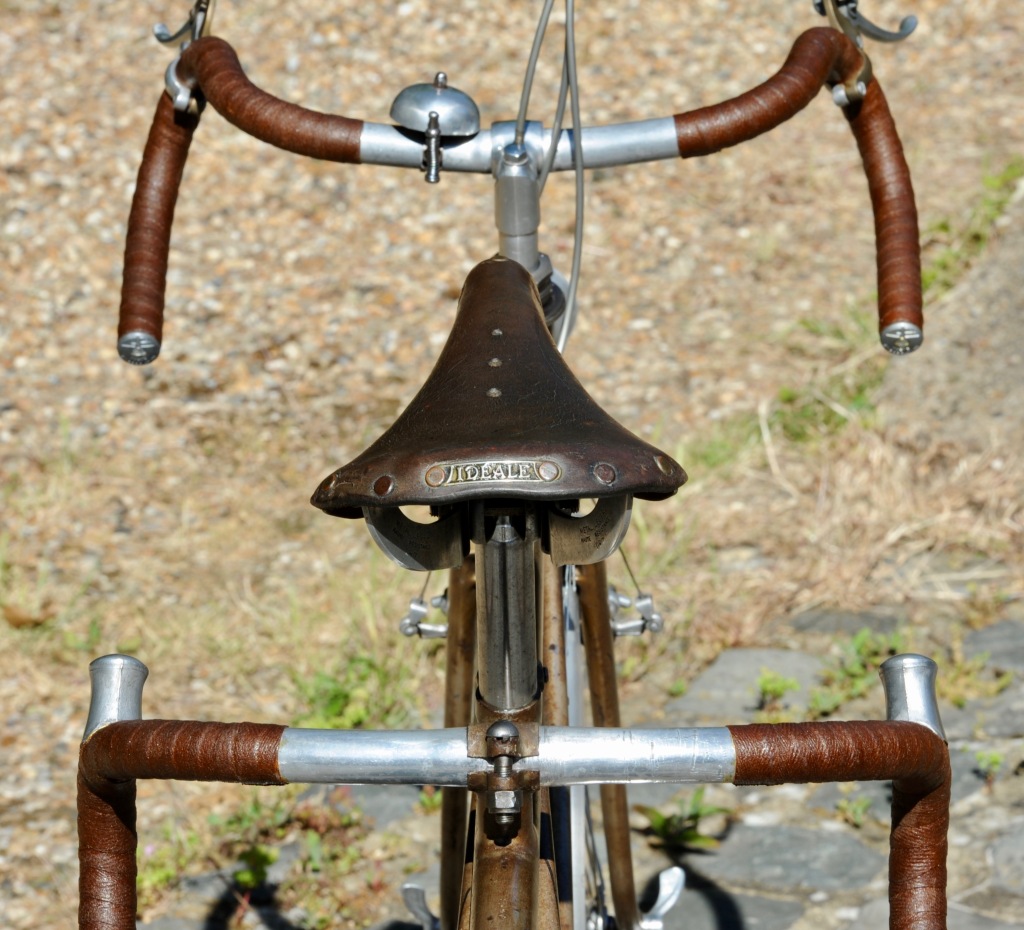
After his death the marque continued for a number of years under Etienne Bernadet (who also rode for Reyhand) and Louis Villemus, who was responsible for the birth of the Lewis brand of components. There is a connection here to the history of this machine, which we will see later.
Of course the successes of the Reyhand marque also benefited the makers of the new lightweight components, and Stronglight (chainsets), Jeay (brakes) and Durifort (tubing) all used Reyhand’s competition successes in their advertising.


This tandem has an intriguing history. I think it likely that the aluminium owner’s plaque might be for the first owner of the machine. M.Richard’s address is only 15 minutes walk away from the atelier of André Reiss in Lyon. The tandem has two frame numbers stamped on it, one on the head tube, and another on the top of the seat tube. They are clearly some time apart, and undoubtedly indicate that the machine was returned to the Reyhand workshop at a time after Reiss’s death for some upgrades, and refinishing. It would have originally been fitted with Jeay brakes, but now sports Lewis cantilevers, patented by the aforementioned Louis Villemus in 1942, who was now running the Reyhand shop with Bernadet. So it was likely constructed circa 1936, and updated in 1942/44. It only had one transfer on it, on the lower horizontal tube.
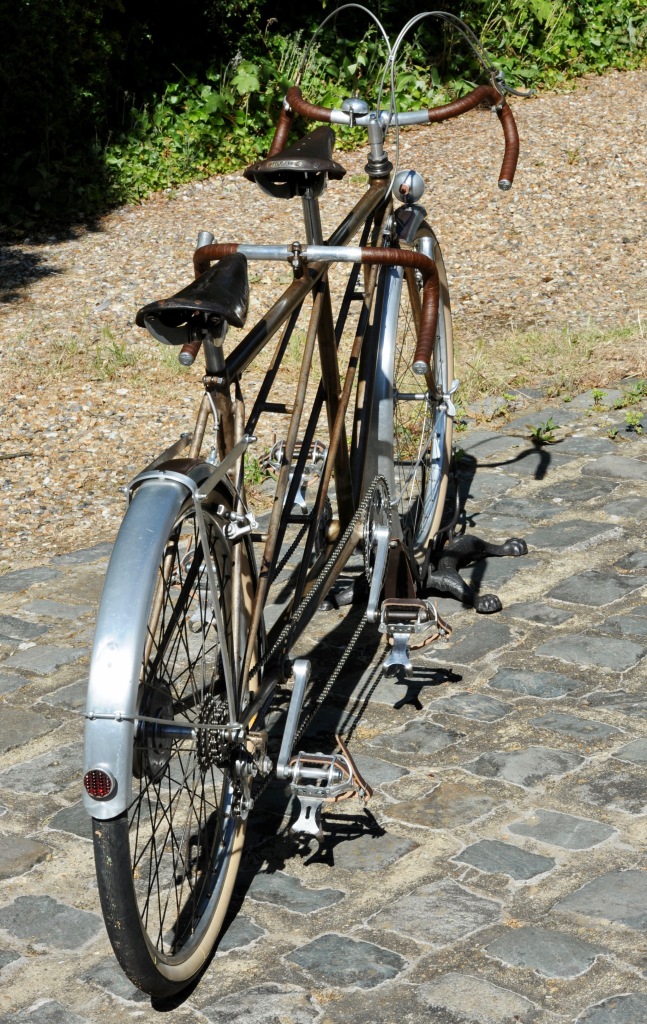
One of Reiss’s innovations in tandem construction was the double triangulation latérale system which was patented by him. This is the use of two pairs of small diameter tubes, running diagonally front and rear. There is evidence that his system pre-dated the similar design by Bugatti. Also utilised was the 4 point construction where the rear seat stays cross the seat tube and are attached to the top tube. These features, executed in Reynolds tubing, combine to make a light, rigid and strong construction, helping to eliminate twist in the tandem frame. The frame is electric welded probably combined with some fillet brazing. There are many nice details, including internal cabling for the rear drum brake, and the standard of construction is very high.

All the finest new duraluminium components of the period were used: Stronglight chainsets, Lyotard 45 pedals, Cyclo Rosa chain rings (steel here rather than the original duralumin), Cyclo 5 speed rear derailleur, AVA stems and handlebars, Lewis cantilever brakes, Mavic rims on CAR hubs, and CAR annular bearing bottom brackets. The alloy ‘honking stops’ on the rear handlebars are lovely, and I’ve never seen them made by Record (who also made wheel rims). The ensemble is completed by Mavic Inal mudguards, Ideale 47 and Sportiva duralumin framed saddles, and a lightweight rear rack (not original).

There is no front derailleur, which was common at that time. To use the smaller chain ring you simply hooked the chain across with your finger, remembering not to pedal at the same time! Even in the 1938 Reyhand catalogue, a front derailleur was an optional extra.
The tyres would have originally been Mouette Barreau, which were very light, so Grand Bois extralight 650B x 42 tyres were used as a modern equivalent. The eagle-eyed of you may note that the rear lamp and dynamo are missing, as I haven’t found suitable ones yet…usually Rotophare or Soubitez.



The preservation of this very rare machine was problematic in some respects. The original finish (or rather period re-finish) was silver. Unfortunately someone in their great wisdom decided to paint it over with varnish. The varnish, probably polyurethane, has discoloured and has proved impossible to remove without damaging the lining and finish beneath. I thinned the varnish in places where it was particularly thick and ugly but have left it otherwise. I also removed the varnish runs, which were running upwards, as the frame must have been varnished upside down! I’ve grown used to it now, and it doesn’t trouble me. I didn’t consider refinishing since it was clearly painted at the Reyhand shop and has some lining and vestiges of the transfer.


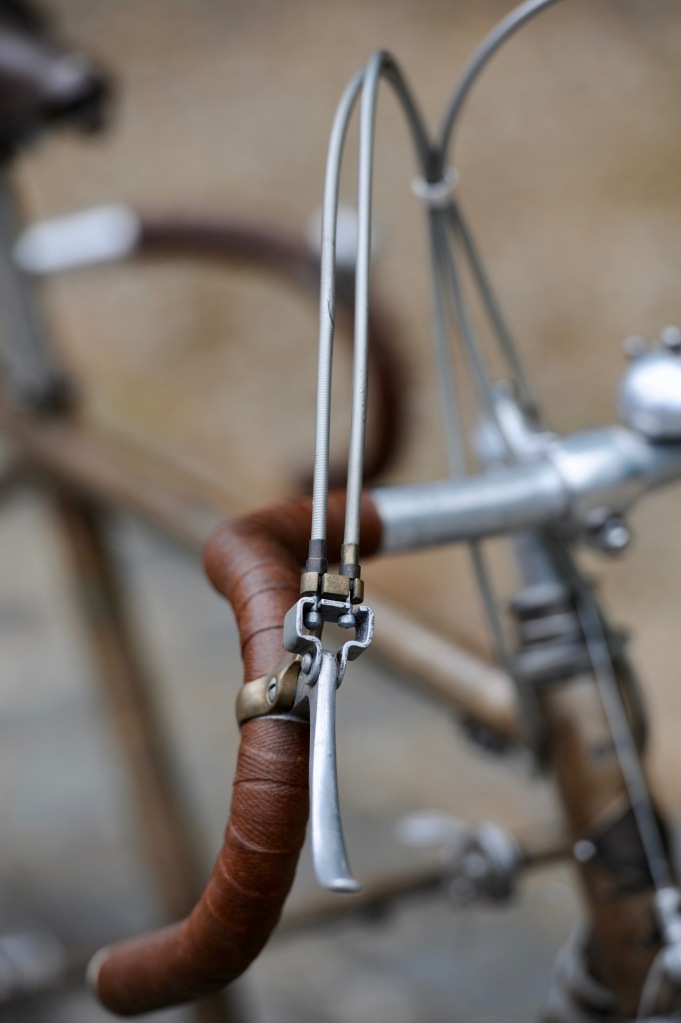
The duralumin parts had almost all been criminally attacked with a electric wire wheel which makes a terrible mess of the surface (never, ever do this!!). Some parts were so badly damaged that I replaced them with exactly the same parts in much better condition…the AVA handlebar stem for instance. The parts have taken me years to locate. The results of bad and unsympathetic ‘restoration’ make life very difficult for those who come later!



Above all, it is difficult to believe how very light this machine is, compared to the very heavy tandems of the time. I weighed it and was surprised and delighted to find that it corresponds to the catalogue weight (see below) for the top of the range ‘Road King’ tandem, at 16.5 kgs or 36 1/2 lbs, which is even light compared to the tandems of today! It is a remarkable testament to the skill and invention of the great André Reiss over 80 years ago.

Pictures of this machine before preservation, as I found it some 10 years ago, can be found here.
Sources:
https://anciensveloslyonnais.weebly.com/reyhand-andreacute-reiss.html#
I want to acknowledge the help of Raymond Henry in the preservation of this tandem. He was very generous with advice, photo’s and encouragement. I sent him some pictures of the finished machine recently and was surprised not to hear back from him. Then I heard the shocking news, via Jan Heine’s blog that he had passed away. Please do read Jan’s tribute to him here. He was a remarkable man!












You must be logged in to post a comment.